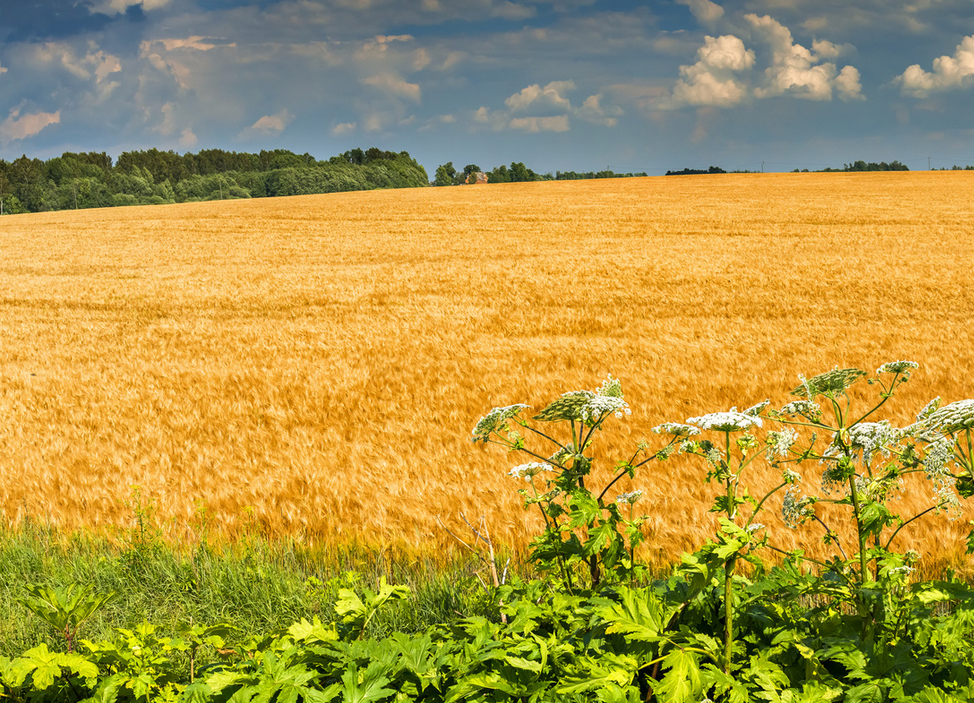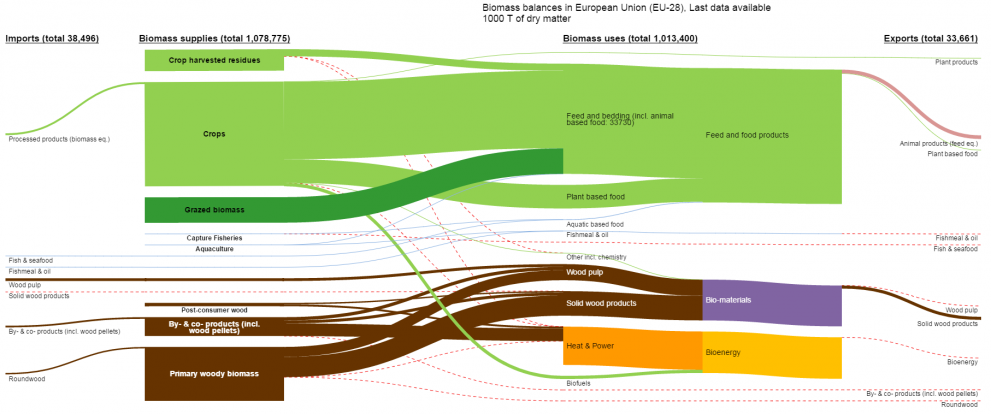
The JRC has recently published a technical report that illustrates the flows of biomass for each sector of the EU bioeconomy, using the Sankey biomass diagram.
Focusing on the dry matter content of biomass, it splits biomass supply into the traditional sectors of agriculture (represented in green), forestry (brown) and fisheries (blue), and biomass uses made into the various categories for which it is used.
The Sankey biomass diagram depicts the flows of biomass for each sector of the EU bioeconomy, from supply to uses (including trade), based on multiple data sources. It can be used for in-depth analysis and comparison of the different countries and sectors across a defined time series.
However, improvements are still needed to fill gaps in the data used, in particular concerning bio-based material and bio-energy uses.
The report gives Sankey diagrams for each of the 28 EU Member States, as well as the overall EU-28 aggregation.

It finds that, for dry matter content, agriculture accounts for approximately 65% of the biomass supply sector in the EU-28, forestry accounts for 34%, and fisheries represent less than 1%. Agricultural supply is split into crops (62%), collected crop residues (23%) and grazed biomass (15%). Almost 70% of forestry biomass comes from primary woody biomass, and the biggest source of biomass in the fisheries sector is imported fish and seafood, followed closely by captured fish.
Over 60% of biomass is used for feed and food, with the remainder split fairly evenly into bioenergy (biofuels) and biomaterials (mainly solid wood products).
The current version of the diagram only represents the dry matter content of biomass. Future research should include the economic, nutritional or other values of the bioeconomy in order to present a broader view of the bioeconomy.
Further information
Details
- Publication date
- 13 June 2017
